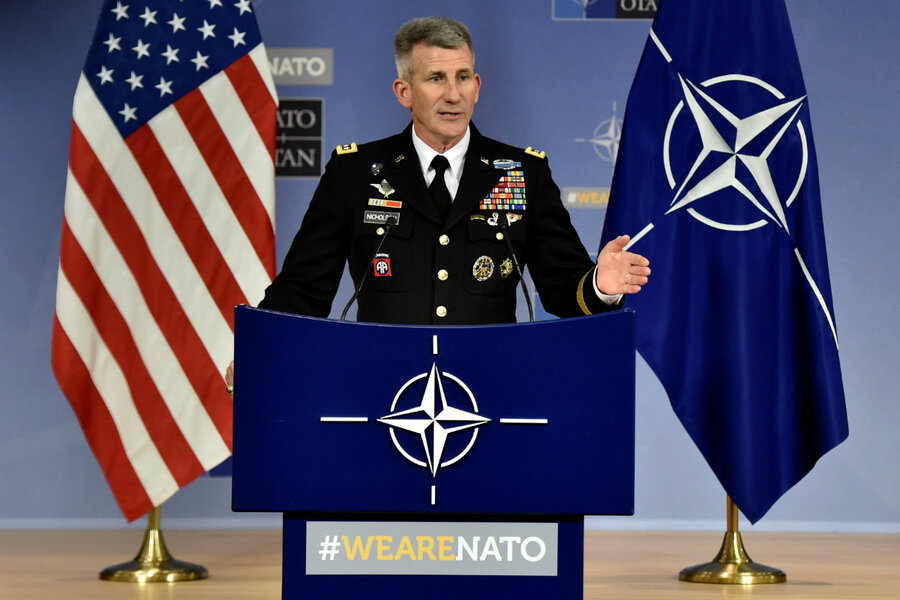NATO looks to increase troop numbers for Afghan training missions
Loading...
| Brussels
NATO's pledge to send more troops to Afghanistan still falls short of commitments, US commanders said on Thursday, concerned that fewer reinforcements could threaten the already precarious security situation in the country.
At a meeting of NATO defense ministers, commanders said that nearly three months after President Donald Trump announced his "South Asia strategy," the promised troop numbers do expand the NATO training presence but not by as much as hoped.
"We have made it very clear to the allies that we really need their help in filling these billets that we have identified," said General John Nicholson, the top US commander in Afghanistan and head of the NATO training mission.
NATO Secretary General Jens Stoltenberg said this week that NATO allies and the United States would split the burden of providing some 3,000 more troops, an increase that would take NATO's training mission to about 16,000 troops.
Two diplomats said that at this stage, the United States is likely to provide 2,800 troops, while non-US NATO allies and partners will send an additional 700 troops, potentially making up a 3,500-strong personnel increase.
Germany, one of the main European troop contributors, said at this point it was not increasing its contribution for next year.
German Defense Minister Ursula von der Leyen defended the decision not to sharply increase non-US NATO troop numbers.
"The commitments received so far are sufficient. We will not reach the total troop level, but to a high degree," Ms. Von der Leyen told reporters.
European NATO's focus has partly shifted to deterring Russia in Poland, the Baltics, and the Black Sea, diplomats said, after Moscow's seizure of Crimea in 2014 helped take East-West ties to post-Cold War lows.
Mr. Nicholson said he was concerned that the United States would again be put in a position where it would have to fill the shortfall.
Security in Afghanistan has deteriorated in recent months, 16 years after the United States invaded Afghanistan to topple the Taliban government that gave Al Qaeda the sanctuary where it plotted the Sept. 11, 2001, attacks.
"We fought ... at the lowest year level of capability that we have ever had in the 16 years. So it was the lowest level of capability and the highest level of risk we have faced in this time," Nicholson said.
Before the ministers' meeting, US officials said about 80 percent of the troop commitments had been met by the allies. They declined to say what percentage had been filled after the meetings, but acknowledged that there was still a shortfall.
The number is based on a constantly changing NATO document known as the combined joint statement of requirements, which outlines the troops required to carry out different missions.
"Coming out of today, it won't be at a 100 percent... but we are still in discussion with more than a few nations that are looking at increasing... so I'm encouraged," said Army General Curtis Scaparrotti, who is the top US military official in Europe and also NATO's Supreme Allied Commander.
According to US estimates, about 43 percent of Afghanistan's districts are either under Taliban control or being contested.
One area in particular where there was a need for NATO troops was in training Afghan soldiers and police officers.
A total of 2,531 Afghan security forces were killed and 4,238 wounded in the first four months of the year, according to figures in a recent report by the Special Inspector General for Afghanistan (SIGAR), a US Congressional watchdog.
"I am most concerned about police training in particular, because we are trying as part of this four year road map to get the police out of paramilitary policing and [into] civilian policing," Nicholson said.
The four-star general said while contractors could potentially be used to fill the gaps, ideally it would be filled by NATO members. A recent report published by SIGAR said that tens of billions of dollars could be wasted unless changes are made in the training of Afghan security forces.
This story was reported by Reuters.







